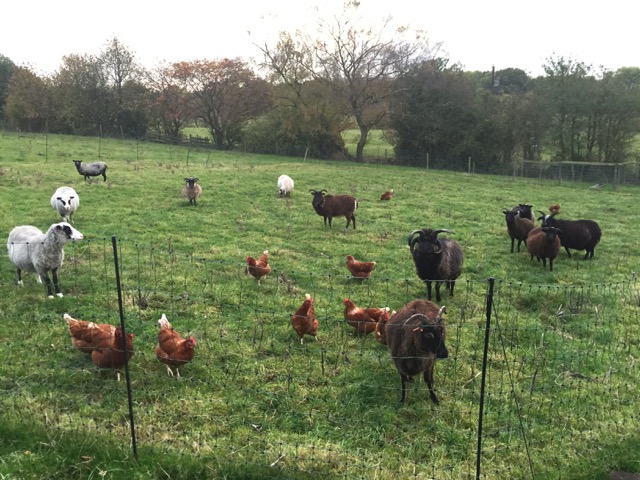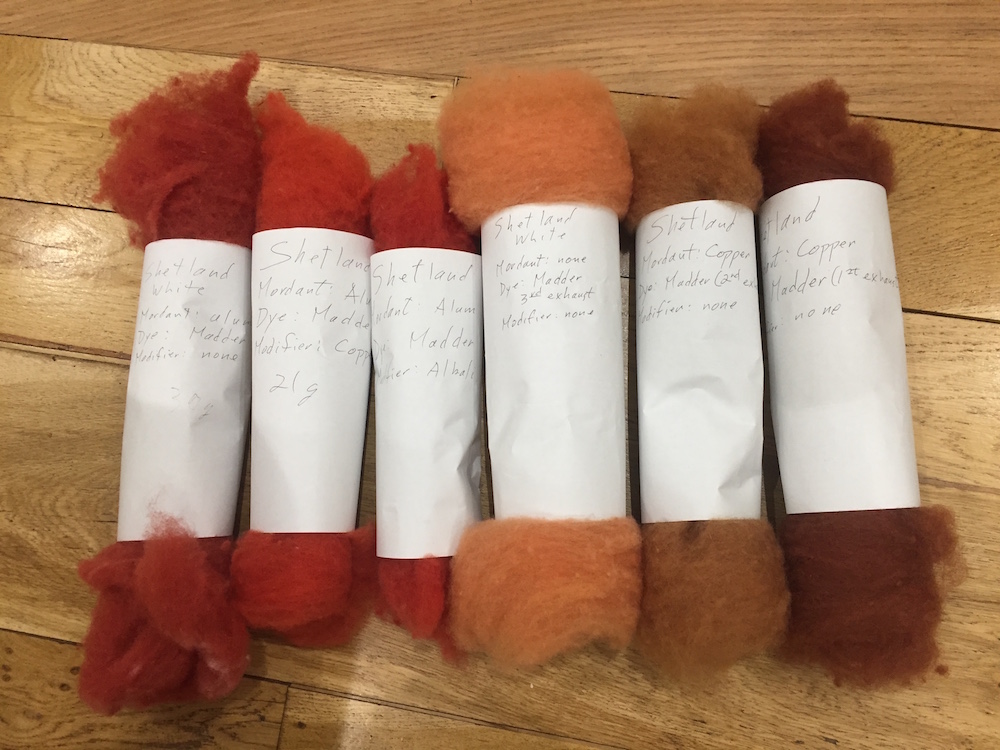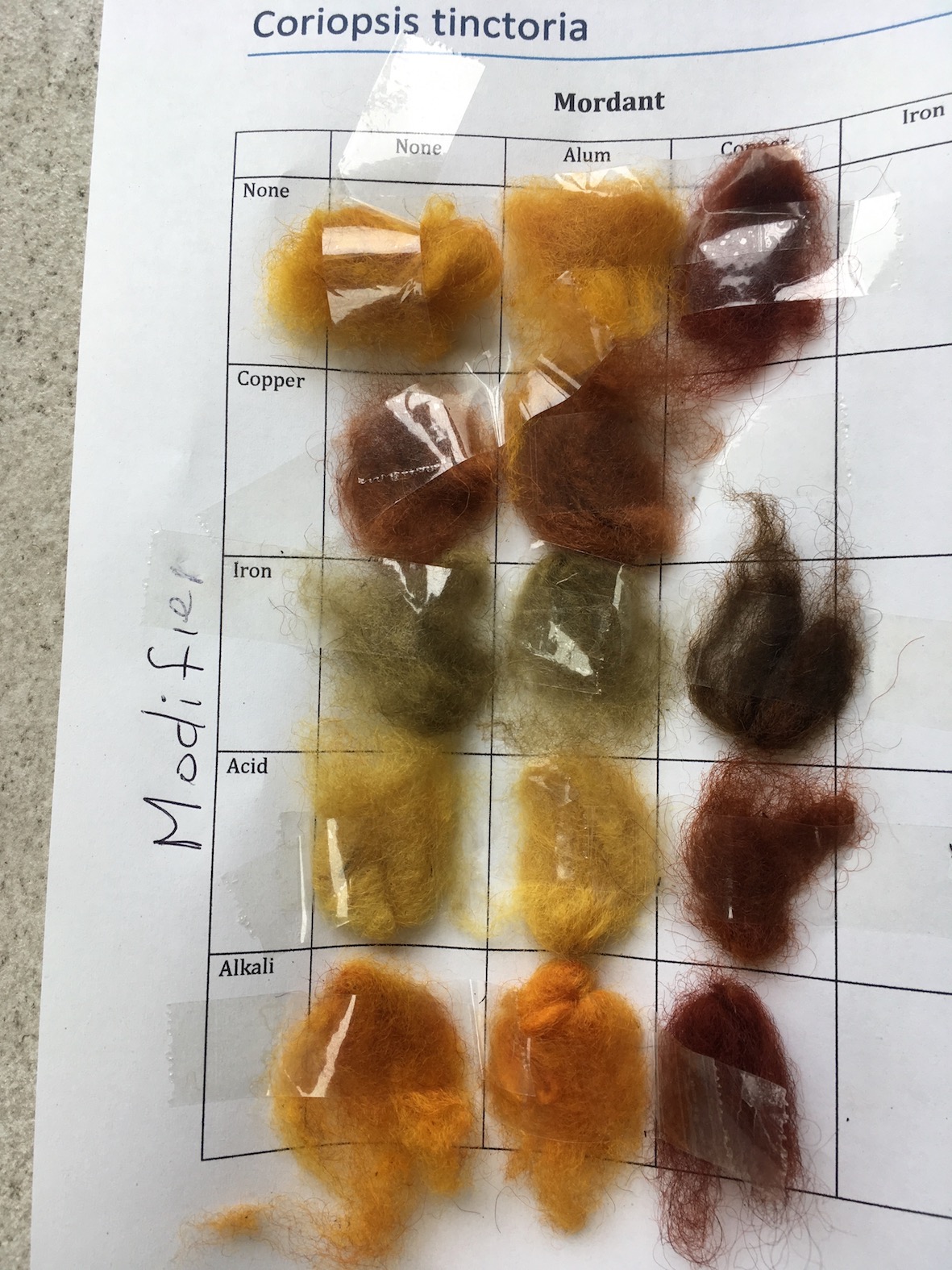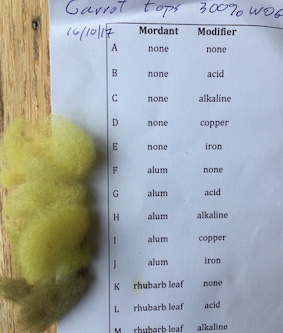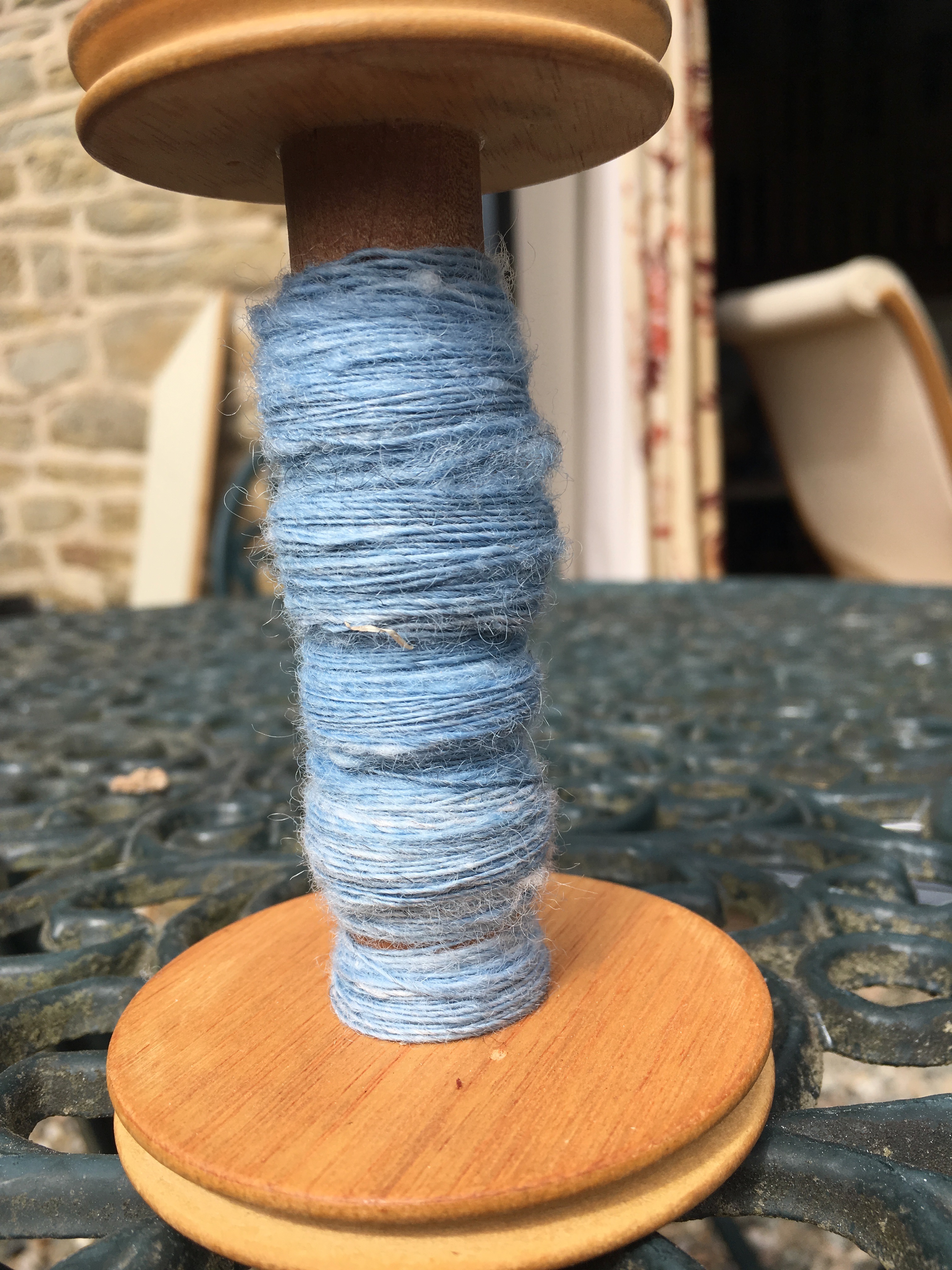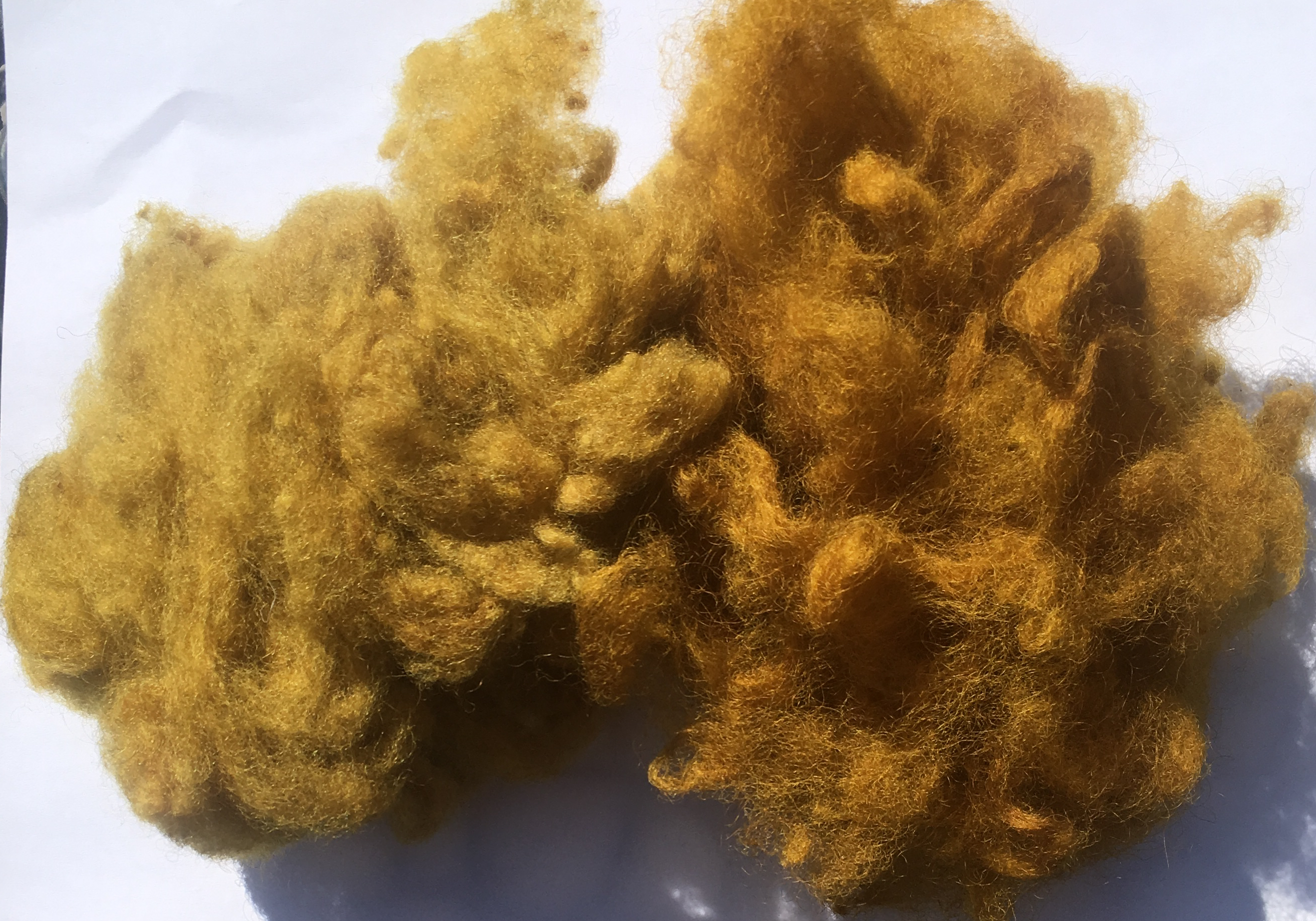Scott Moss: Shepherd, wool processor, dyer & spinner
 Our breeding ram, Diesel
My wife, Linda Moss, and I live on a smallholding in the High Peak district of England where we raise Shetland sheep and heritage breeds of chickens. I shear the sheep using a hand blade and then scour the fleece to remove dirt and oils. Some of the fleece is dyed using vegetable dyes and rest is left in natural Shetland colours which range from a deep, dark brown to white. The scoured fleece, both natural and dyed, is then combed and carded by hand, ready for colour blending and spinning. I produce both "colour gradient" and single-coloured yarns. The colours in both cases are frequently produced by blending different colours of fleece. There are many different ways of processing wool from fleece-on-the-sheep to spun yarn. On this website, I describe how I get from the fleece-on-the-sheep to finished yarns with various characteristics. I try also to describe alternative approaches and the relative merits and limitations of each alternative. The menu at the top indicates the order in which each step in wool processing is taken. A video summarising the processes I use is to be found here. Wool in the various stages of processing is widely available to buy from such sites as etsy and ravelry. I can also sell limited quantities of fleece, dyed and undyed combed tops or carded batts which I have already produced. I do enjoy working with spinners, weavers and crocheters to design colours, colour gradients and yarns with different characteristics. A range of colours I have produced using natural dyes grown in our own dye-plant garden or harvested locally (such as ivy berries and dandelion flowers) are shown in my on-line dye book. If you are interested, my contact details are here. | ||
May 2019 | ||
|
May 10th We have had six surviving lambs this year. There was a seventh but it contracted an infection at about a week old. Our neighbour cbildren, in particular the eleven-year-old boy, were upset to find the lamb obviously weak and abandoned by its mother. We took itto the vet for the usual course of antibiotics and then the children nurse for another weak until finally it died. We will be having a little funeral ceremony for it before it is taken away by the knacker. As promised in my December posting, I have now produced the online version of my book of dye samples. This spring, we collected nearly a kilo of ivy berries and another kilo of dandelion flowers. Copper and alkali modifiers (applied after dyeing) produced some interesting greens from the ivy berries. The mordants did not seem to make much difference. | ||
December 2018 | ||
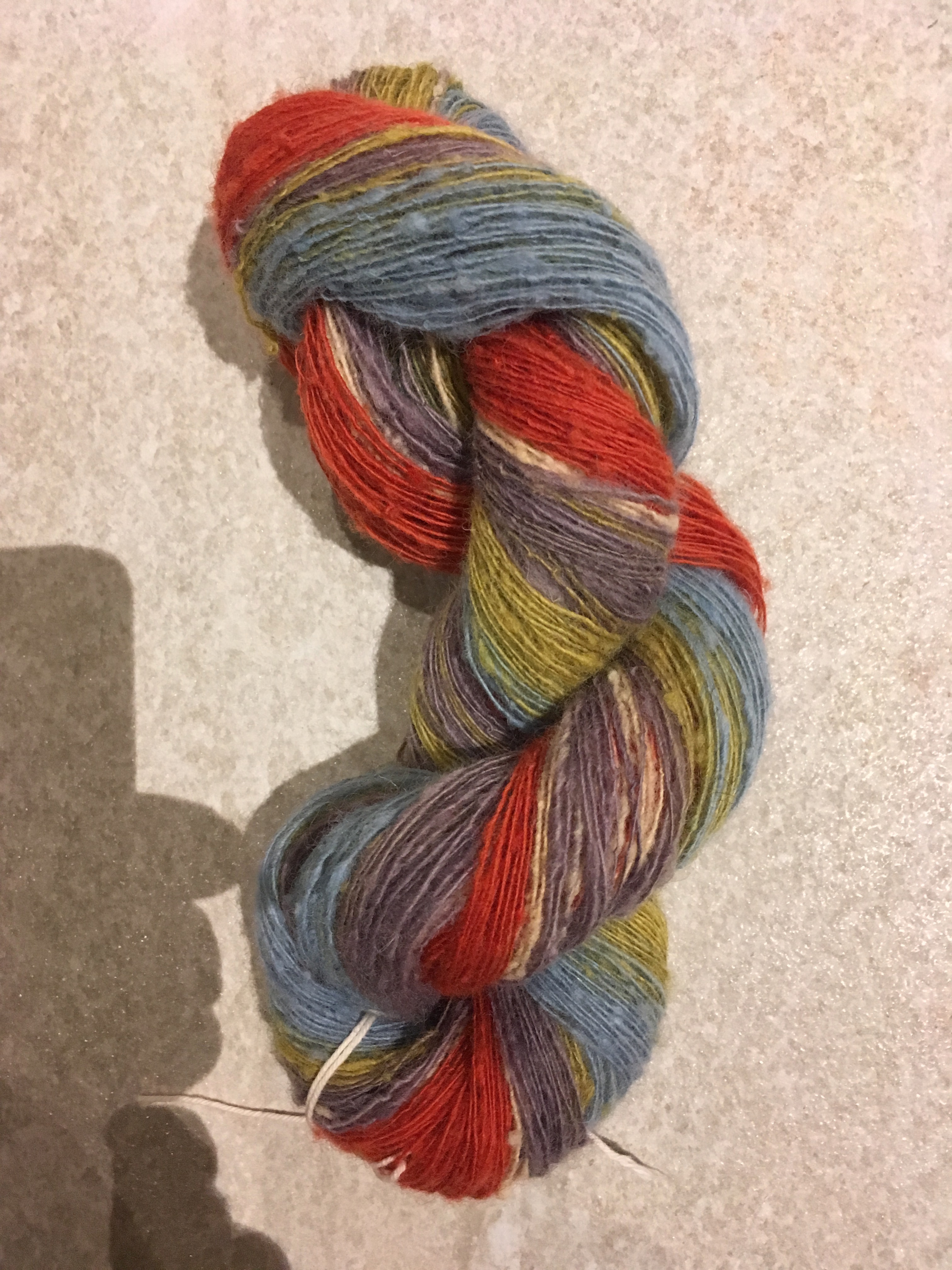 Colour-gradient yarn using natural dyes
December 5th Since my last posting, shamefully long ago, I have been experimenting with natural dyes harvested from my dye-plant bed. Colours from natural dyes tend to be soft but it is possible to get some quite vibrant colours as shown in the photo of the skein on the left. I am particularly interested in developing a record of how different mordants (especially copper and alum) used to treat the fibres before dyeing and how different modifiers used to treat the fibres after dyeing produce different colours. At the right, the lower photo shows the display method suggested by Jenny Dean in her very useful book, "Wild Colour" . This linear collection of yarns samples differentiated only by mordant and modifier is actually quite common. However, I have been developing a table in which each column is for a mordant (or no mordant) and each row is for a modifier. The advantage of my tabular organisation is that it enables the reader to see the general effect of modrdants alone and modifiers alone. I am working on a program for putting my book of samples in this form online. | ||
August 2018 | ||
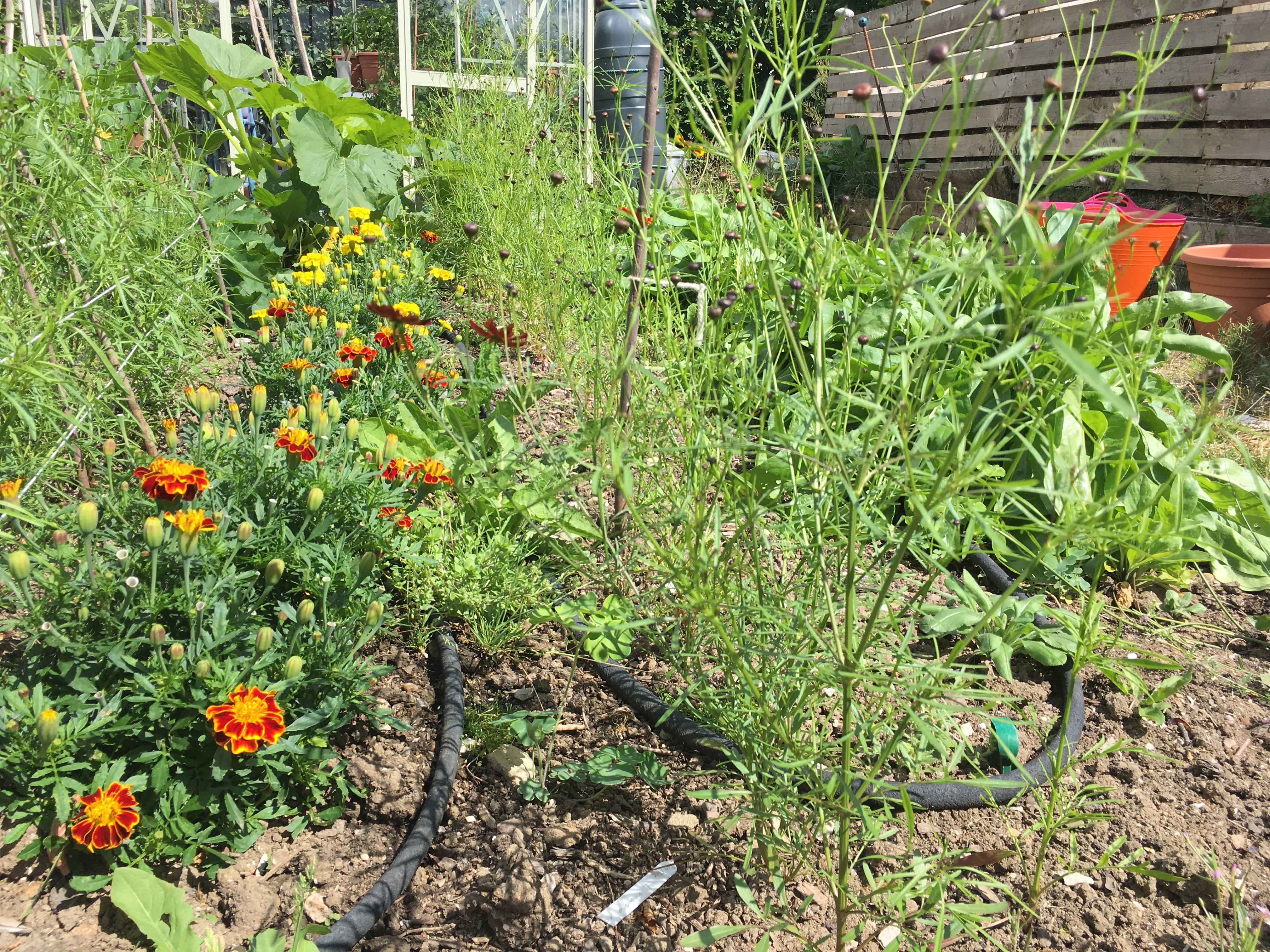 Dye plants early in August
August 3rd The last few days, I have been harvesting and using dye plants I have grown from seed. I haven't yet tried the madder roots to produce a red dye but I have now dyed with marigold flowers and woad leaves. The woad-dyed yarn in the photo on the right has been spun cobweb-lace weight. It will be knitted either as a lace scarf or two singles will be plied to produce a yarn that Linda likes for her Fair Isle designs. I used the marigold flowers with the most red in them to make the dyebath for the fleeces in the photo lower right. The left-hand bundle of fleece is blended from different experiments with modifying. Most of it is unmodified but there are small elements of alkaline and acid modified fleece. The right hand bundle was mordanted with copper sulphate which enhanced its golden quality. | ||
May 2018 | ||
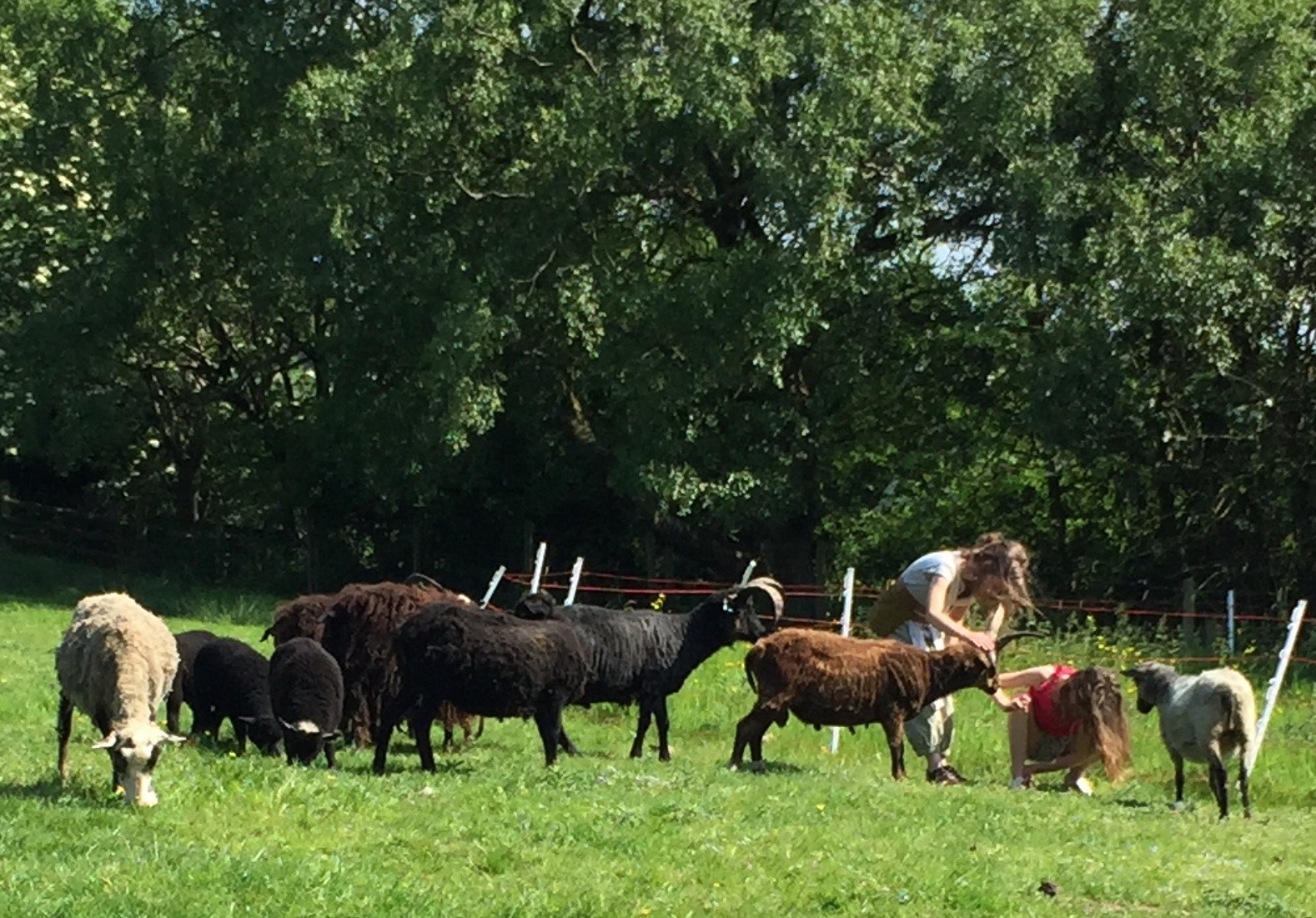 Grace and Faye playing with Goldie May 28th We now have eight lambs — three sets of twins and two singletons. the last of the singletons was delivered by our ewe Minerva a couple of weeks after the last of the previous seven lambs. Commercial sheep farmers cponcentrate the lambing by putting the rams in with the ewes for only a few days when the ewes are in season. Our more easygoing approach keeps rams and ewes and lambs together all the time so lambing can extend over weeks or even (as in this case) a month. It is not a problem for us or the sheep — especially because our Shetlands have never had any lambing problems and, with only five breeding ewes, we would soon notice any problems. We do, of course, keep a close eye on the ewes so we know when they are about to drop their lambs and can see if labour is taking too long. | ||
April 2018 | ||
|
April 24th We now have seven lambs - three sets of twins and a singleton. All are healthy and running about. It is always nice to see them jumping and playing in the early evening. | ||
|
Annetto=dyed fleece April 10th It is now more than a week since Minerva's lambs were born. Our other pregnant ewes look ready to burst but none yet appear to be in labour. Whenever one of them sits off by itself, I think that her time is come. But, then, nothing. Perhaps it is the cold weather we have had. | ||
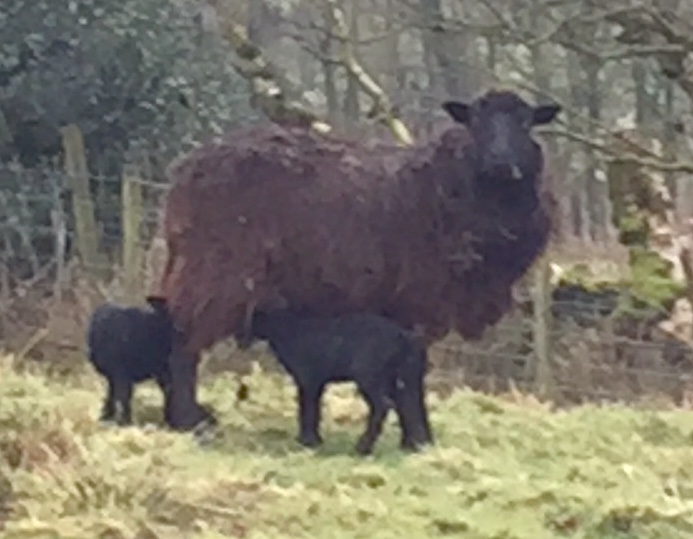 Minerva and lambs 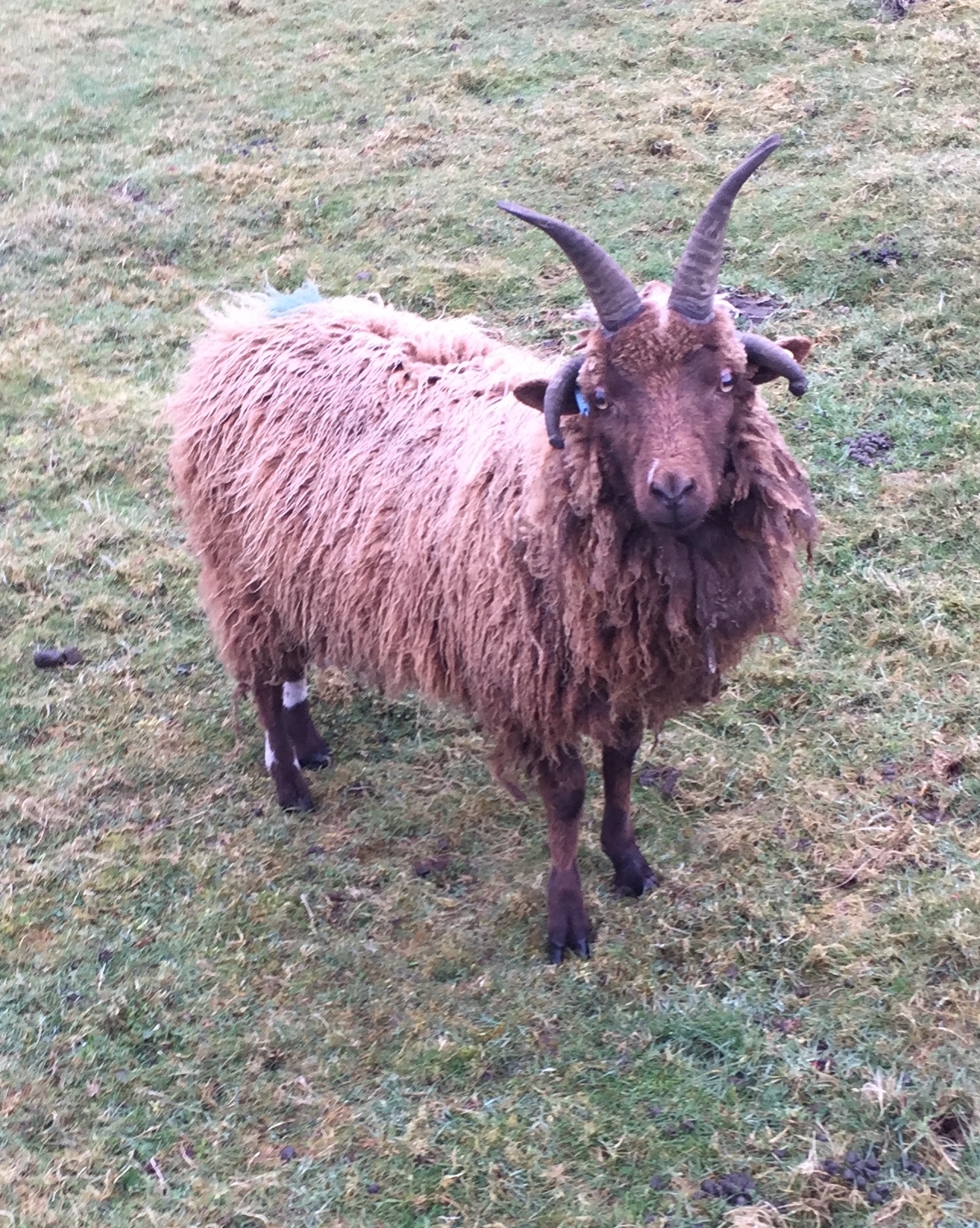 Goldie April 2nd The first two lambs of the year were born today to our ewe Brookfold Minerva. Thery were discovered still wet from the womb by two of our helpers, seven-year-old twins Faye and Grace and their nine-year old brother Dexter. The children live next door. Nearly all Shetland lambs are black at birth and change colour over their first year. The children have naming rights (sometimes subject to negotiation) for the sheep but haven't named these two yet. So, for the present, they are just Minerva's ewe lamb and her ram lamb. We have a new year-old ram which the children have named "Goldie". We bought him because he is a moorit which is a soft fawn-like tan colour. The Shetland Islanders have more than 60 names for differnt markings and colours of the Shetland sheep of which moorit is one. The plain white ones are called mirkface. There is a variety of grey including katmollet, katmoget and sokket (though this list is by no means exhaustive). We have another four ewes close to giving birth. Watch this space for further announcements. |
